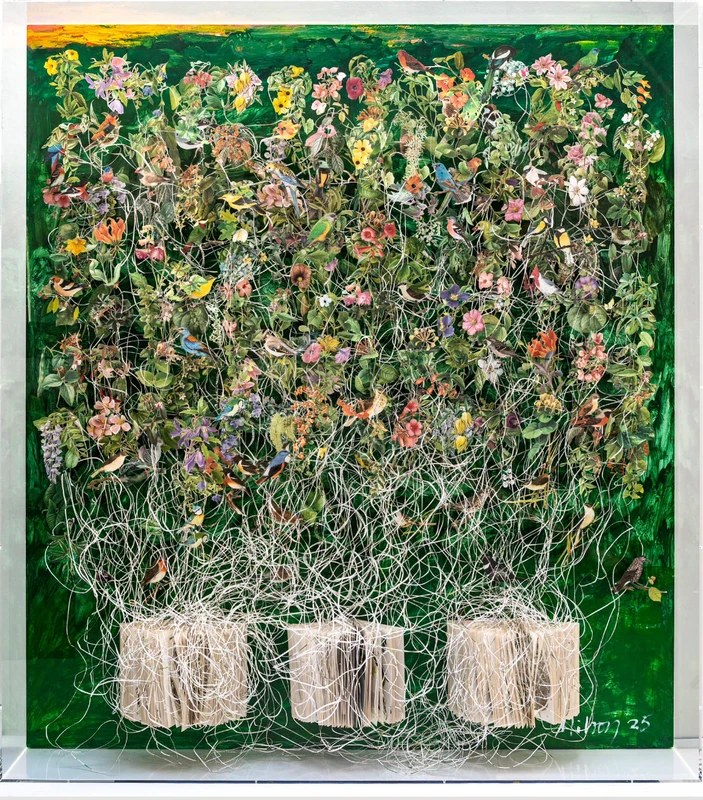Jack Milroy: Post-Card Post-Book
14 Aug-3 Oct 2025


Jack Milroy has been primarily London-based since 1971 where he began exhibiting in 1976. Now he has relocated to England’s south coast and most of these works are from the new studio. The 2016 monograph, CUT OUT, contains extensive writing and biographical information.
This first presentation of Milroy’s unique constructions here in Shoreditch includes classic examples of his plundering of our culture’s printed and ephemeral material along with hauntingly intricate and delicate evocations of beauty and fragility.
He writes of the radical new book-pieces here included:
The recent works emerged, as they often do when relocating a studio, from the rediscovery of past, forgotten pieces. One such piece was a book titled Plantes Grimpantes—an object my assistant had cut into years ago. At the time, I had no clear way of resolving it. The idea I had was technically impossible, so it was shelved and ultimately forgotten. What I needed was a structure that would allow the plants to climb out of the book—something that in a garden would be a trellis. But trellis felt too literal, too illustrative. I needed a more ambiguous, sculptural solution—something that acknowledged support without dictating meaning. As so often happens in art, a technical innovation opened a new direction. Discovering that pegs—elegant, minimal, modular—were available to buy in bulk suddenly made the piece viable. It’s as if the book had been quietly waiting for this solution to catch me up. This process reminds me that no matter how much freedom you seek in your work, a structure or system—something that both constrains and enables—is essential for an idea to find its form.
I was once featured in ‘Art Rules! and How to Break Them’ by Mel Gooding (2014). It’s true—some rules must be broken. But just as true: others must be invented. Unlike much of what is manufactured on platforms like Instagram today, where “everyone can be an artist” and no rules seem to apply, enduring work often depends on the thoughtful establishment—and transgression—of rules.”
The postcard works, like much of my output, were sparked by a structural discovery. I had been given a small self-standing photo frame, the kind with a support cut and folded out of the back. That simple device suggested a new possibility: what if the image in the postcard could support the card itself? This insight allowed the image to take on a dual role—as both content and structure—and opened up a new language of juxtaposition. I could now compose visual “sentences” by combining postcards in physical relation to each other, much like a writer arranges words. One of the first works from this line of inquiry was 'Six Short Stories in Search of an Author', a reflection on the narrative potential embedded in image, structure, and sequence.